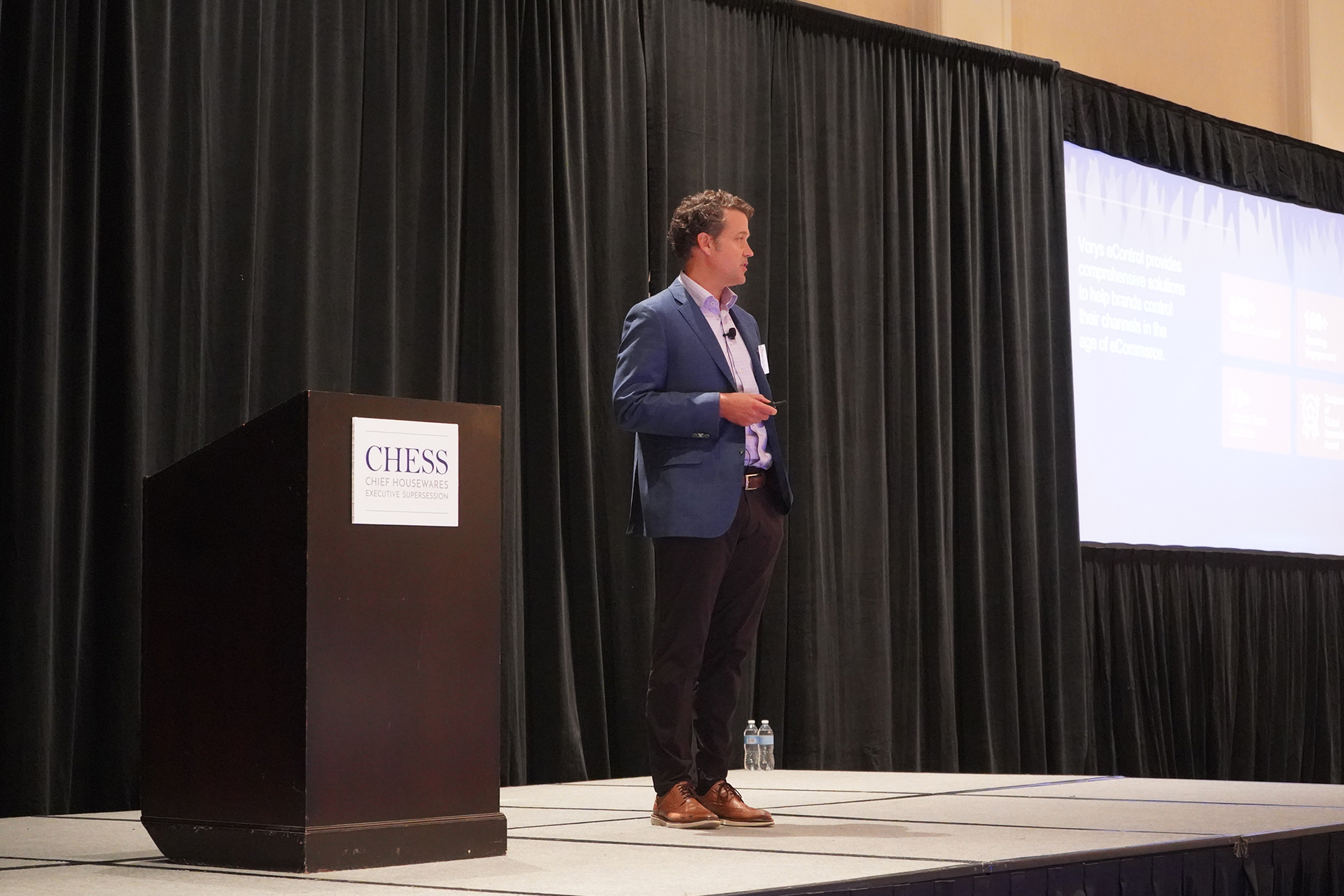The International Housewares Association’s 2022 CHESS (Chief Housewares Executive SuperSession) kicked off yesterday with an industry education program that covered topics ranging from economic and financial market outlooks and shifting consumer macro-trends to creating customer-based corporate value and enforcing e-commerce brand control.
PFAS Legislation: What the Housewares Industry Needs To Know
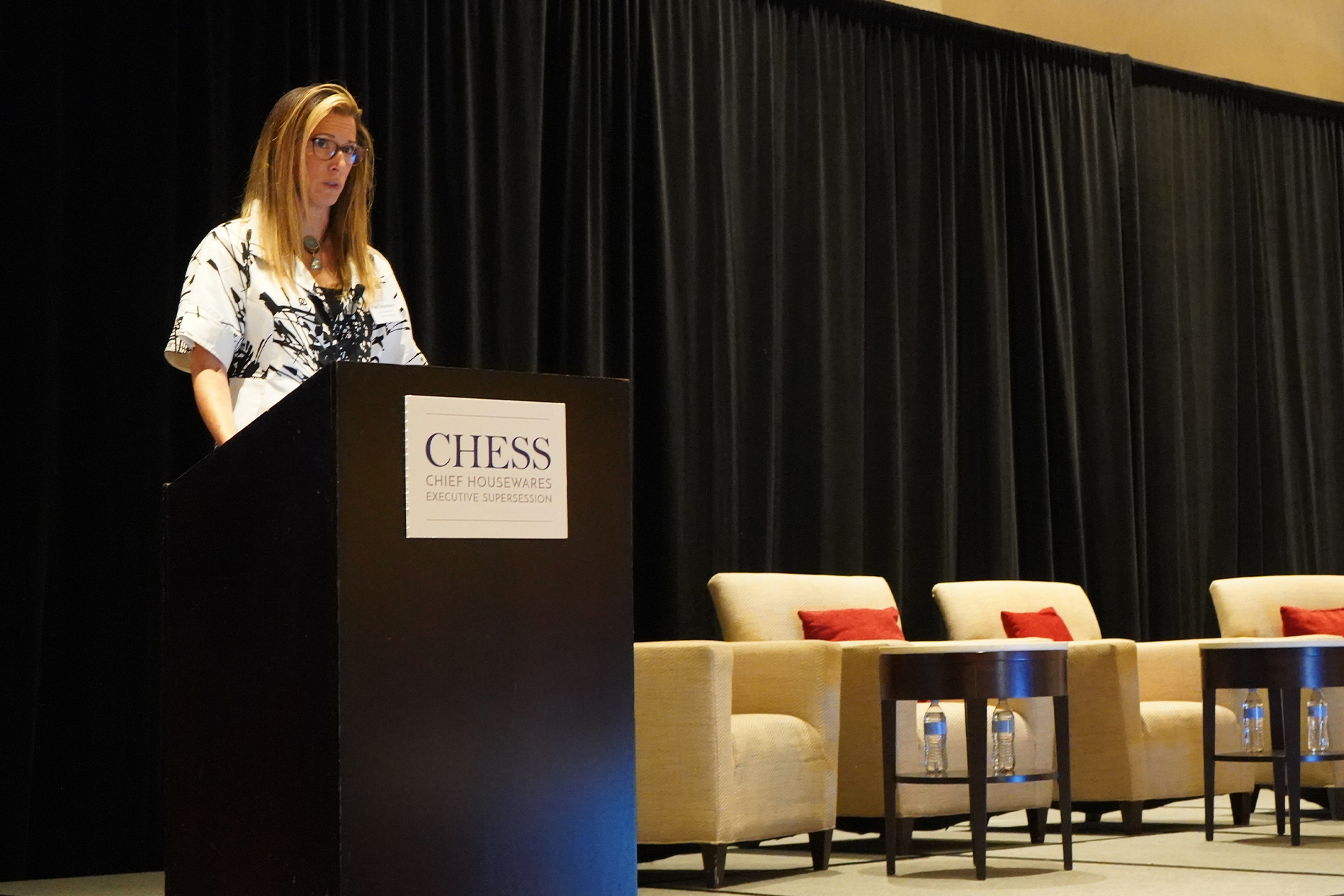
Fran Groesbeck, managing director of The Cookware & Bakeware Alliance, formerly the Cookware Manufacturers Association, provided an overview of legislation affecting PFAS – perfluoroalkyl and polyfluoroalkyl chemicals used in cookware and other housewares items. No longer just about cookware, the PFAS issue is growing in importance and changes every day, she said.
Groesbeck said more than 14,000 chemicals are considered PFAS and new chemicals are identified and added every day. They are classified into families and groups with each group having different factors. Understanding each chemical’s rank on its risk factor helps understand how it is affected by the legislation, she noted.
All products are made of chemicals and there are more than 350,000 chemicals currently in use. Three states, California, Colorado and Maine, have enacted legislation requiring chemical disclosure statements on packaging. The California and Colorado legislation also affects the marketing of a product. Five other states are considering legislation to ban products with PFAS; Vermont is the first state to enact strict penalties. Groesbeck said PFAS legislation will affect all types of products from electronics to medical equipment. Suppliers need to determine if their products are affected.
Under the Right-To-Know legislation, beginning January 1, 2023, products sold in California must have a website that identifies and provides additional information on the chemical(s) it contains and begin to identify on its packaging or product label the regulated chemical the product includes.
Groesbeck said suppliers can prepare for the new rules by doing research about the legislation and their products, asking questions, connecting with resources and having their documents ready for review.
The Cookware & Bakeware Alliance offers resources for members including Industry News bulletins, educational videos in conjunction with Good Science and resources for more information.
Housewares Hot Seat: Constantly Evolving – How To Remain Proactive in a Reactive Marketplace

The life and business disruption of the pandemic created a series of new challenges and a need for companies to pivot and anticipate multiple scenarios and change course as needed.
During this year’s Housewares Hot Seat, Rob Michelson, president and COO of Bradshaw Home, Luke Peters, President and CEO of NewAir and Brigitte Roy, president of Danesco discussed how companies in the past two years have had to react quickly to change in areas like staffing and labor challenges, supply chain, digital marketing and price elasticity and inflation.
When looking at staffing and labor challenges, Roy said that she thought the pandemic made the company a better version of itself, coming together in a time of crisis with more compassion. Michelson noted that the younger generation is concerned with work/life balance and that it is important for the organization to balance that. Peters said that he believes the philosophy has changed; people want sincere appreciation. Surveying the team and making changes along the way was successful for his company.
The supply chain is another area in which flexibility has been necessary. Peters stated that the hardest thing has been diversifying the supply chain, but noted that having excellent, high-level leaders at the helm has helped. Roy followed by saying that Danesco has transitioned from a few leaders managing the supply chain to an interdepartmental push that has created a connection between different parts of the company.
On the topic of e-commerce, Roy discussed Danesco’s use of B2B e-commerce provided tailored experiences for retailers; it’s everything expected on a B2C level at B2B. Peters stated the future for the next 10 years is to own your brand and get your brand message out through influencers, e-commerce and wherever possible.
Digital marketing techniques have also seen some changes in the past few years. Peters noted that it’s pay-to-play on most of the channels at this point and it’s crucial to work with the right influencers to get the company’s message across. Michelson said they have added to the creative team, implementing more videos and examining how products can be tested online. Only the product “winners” end up in brick-and-mortar but some niche products can be created that only end up online.
Discussing price elasticity and inflation, Michelson said as inflation and price increases begin to rightsize, he believes the consumer will ultimately make the decision; although retailers have been hesitant to take advice, it is up to the company to show the retailers the consumer data. Peters added that it’s hard to predict and navigating the margin of channels has been difficult, but that he is seeing the light at the end of the tunnel as they go into next year to rebuy.
Rethinking traditional promotional schedules has become key. Peters said that promotions don’t always have to fall on price but can rely on ad spend and where companies want money deployed for views and impressions.
To close the session, the panelists discussed why their companies are better equipped to succeed now than they were in 2019. Roy expressed that her team had become more flexible and adaptable and more understanding of the impact of issues interdepartmentally, Michelson said they have more consumer data to help them answer questions about where the consumer is going and if they have the right products for them and Peters stated it was about team and talent, specifically their strong logistics team.
Macro Trends Affecting Home Goods – and Everything Else
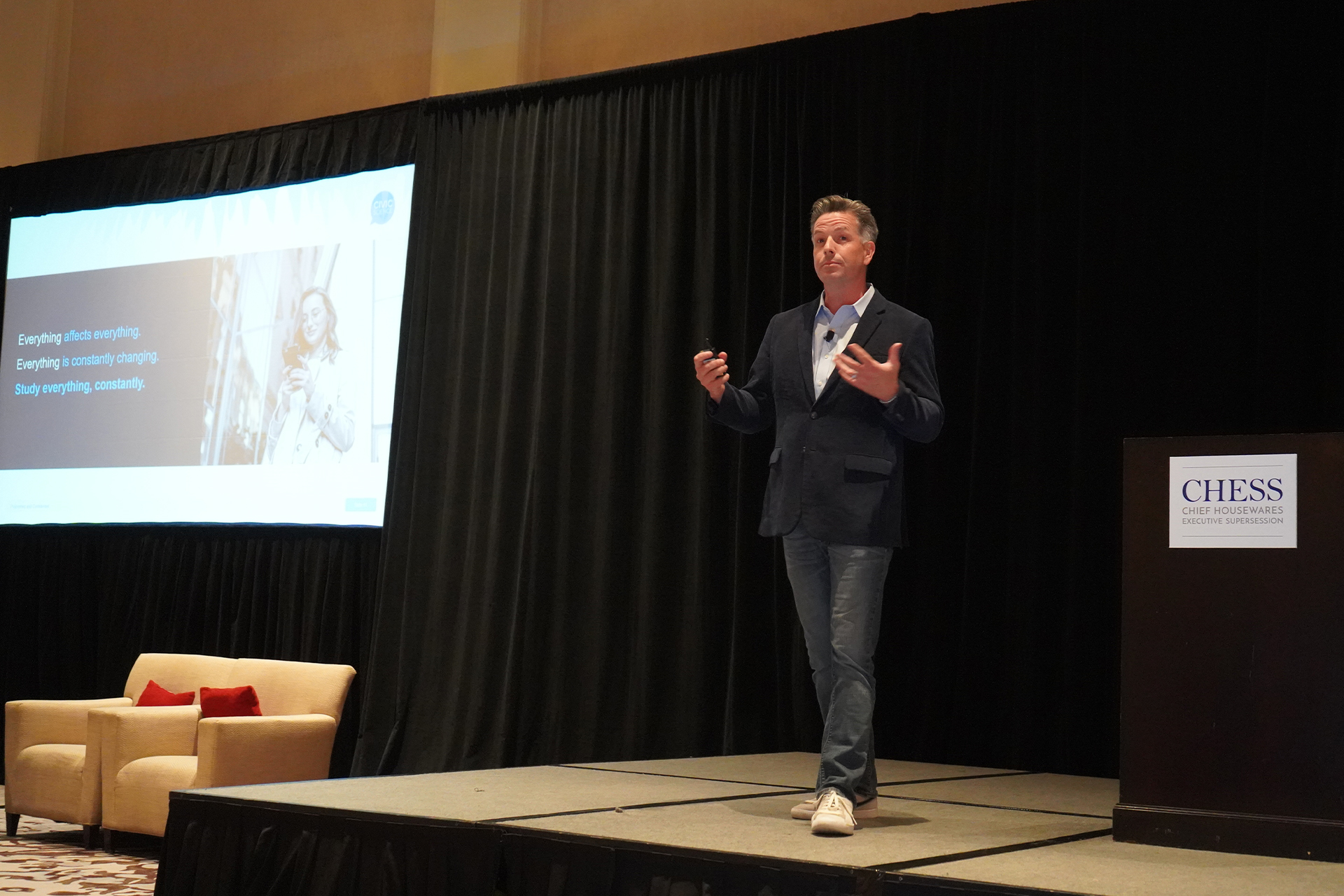
Everything affects everything, everything is constantly changing, said John Dick, CEO of CivicScience, in discussing the macro trends affecting the housewares industry. The consumer marketing company surveys more than 120 million US consumers, covering 350,000 topics via 4 to 5 million surveys, he said.
Consumers’ personal views are now more heavily influenced by socio/political forces than in the past. Consumers used to think about issues through a lens of economic sentiment followed by socio-cultural-political forces; life-stage, generational cohort and lifestyle; media and brand preferences; and lastly, shopping and consumption behaviors. Now, consumers think about issues equally by economic sentiment and socio-cultural-political forces, followed by the other factors.
Consumer confidence and political tribalism converged in 2016 with the presidential election and are still a factor today, changing based on election results. US adult Republicans’ economic sentiment rose after Donald Trump was elected and fell after the 2020 election of Joe Biden and vice versa for Democrats. Political tribalism also affects ethnic groups and their consumer confidence levels, in turn affecting retailers.
Dick said consumer financial health is highly correlated with housewares industry trends and a 5% increase in the consumer financial health index corresponds to a 5.5% rise in housewares spending.
Dick also addressed the post-COVID consumer, noting that while the pandemic might be over, COVID life might be here to stay. Some consumers may be months, or longer, or ever, from a full return to normal. Fewer than 1-in-4 Americans say their lives are fully back to pre-pandemic normal. Among those whose lives have returned to pre-COVID normal, just 24% are confident things will ever look the same again.
While longer-term consumer outlook has been rebounding since early summer, people are still reporting spending cutbacks across the board with housewares in the middle of the pack. As expected, dining out is the top activity cut while household items remain steady with just 34% of consumers cutting back on those purchases.
Supply chain issues have had a permanent impact on the consumer psyche, he said. More than half of consumers have migrated away from brands they usually buy because they were not available due to supply chain problems. Loyalty lasts as long as one can get a product. If a product isn’t there the one time a consumer needs it, they won’t go back to it, Dick said.
Achieving Channel Control for Profitable Growth on Amazon and Beyond
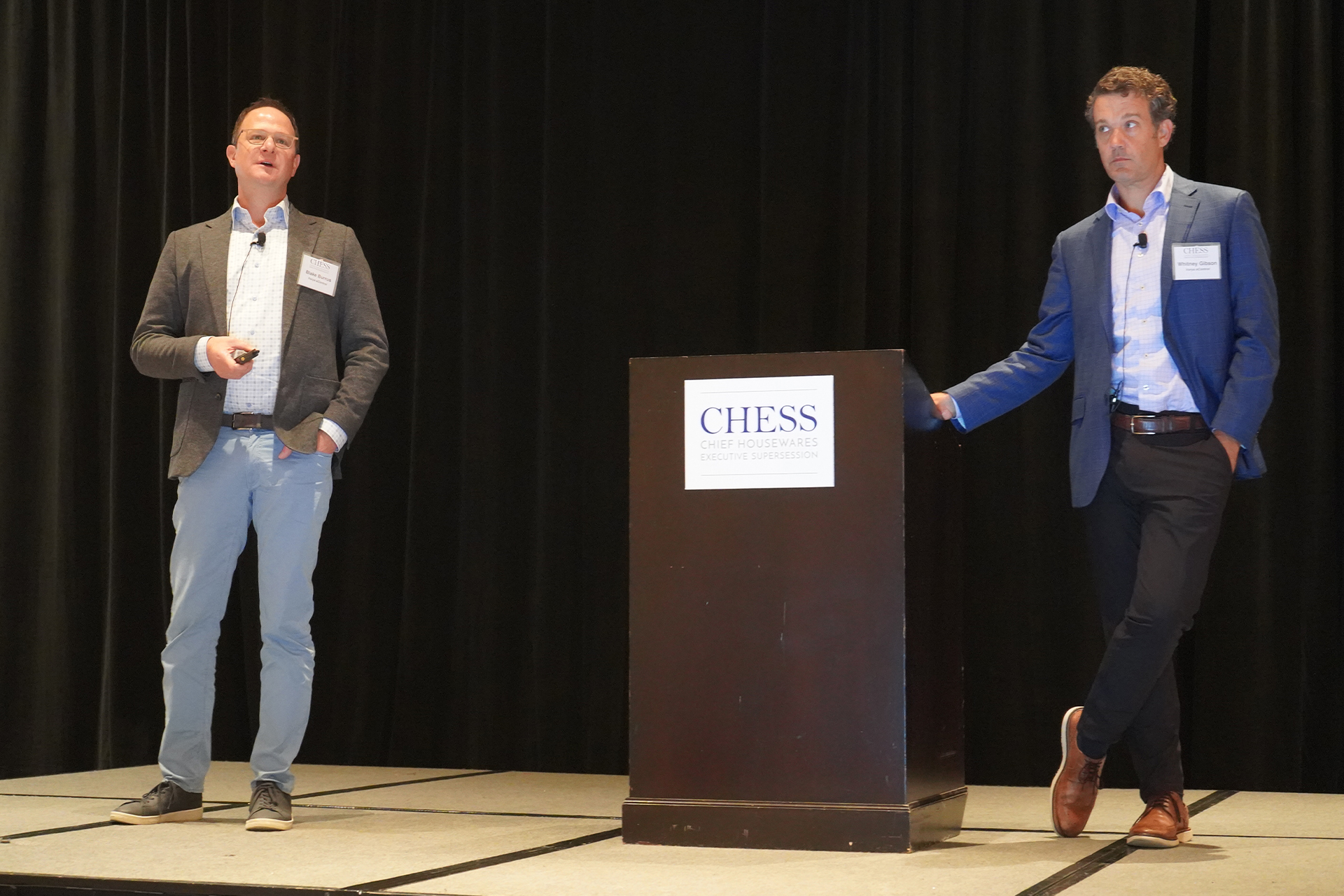
Brands that want to grow sales and other online marketplaces often face channel dynamics that prevent them from doing so including losing sales to unauthorized sellers, failure to capture optimized return on ad spend and disruption across business channels. By creating a channel-control strategy to drive the majority of sales through their desired Amazon strategy, brands can stop unauthorized sales while improving business in traditional brick-and-mortar channels.
In the session, “Achieving Channel Control for Profitable Growth on Amazon and Beyond,” Blake Burrus, executive director of Vorys eControl and Whitney Gibson, CEO and co-founder of Vorys eControl discussed how rapid growth in marketplaces and e-commerce have collided to create the uncontrolled distribution of products creating new pain points like companies competing with each other on price in a fully transparent world of price matching.
A lack of marketplace control triggers a profitability death spiral across all channels. First e-commerce booms, then third-party sellers flock to the marketplaces, intra-brand competition drives down brand value which leads to the “lost buy box” where a product loses its first seller status to a 3P merchant, the brick-and-mortar stores match online prices, traditional channel profits decline, e-commerce profits decline and all channels wind up less profitable.
To combat this, brands should take advantage of the Authorized Reseller Program on Amazon, in which the brand is in control of authorized sellers, allowing the brand to keep all channel partners informed of their lanes and staying in them. “If you don’t have one of these, you need it,” said Burrus.
Commercial benefits that arise from control include the ability to optimize Amazon Marketing Services advertising, increase review scores, reduce channel conflict, improve bargaining power, increase organic search, increase overall sales and increase overall margin which can lead to optimal growth.
Customer Valuation Comes of Age
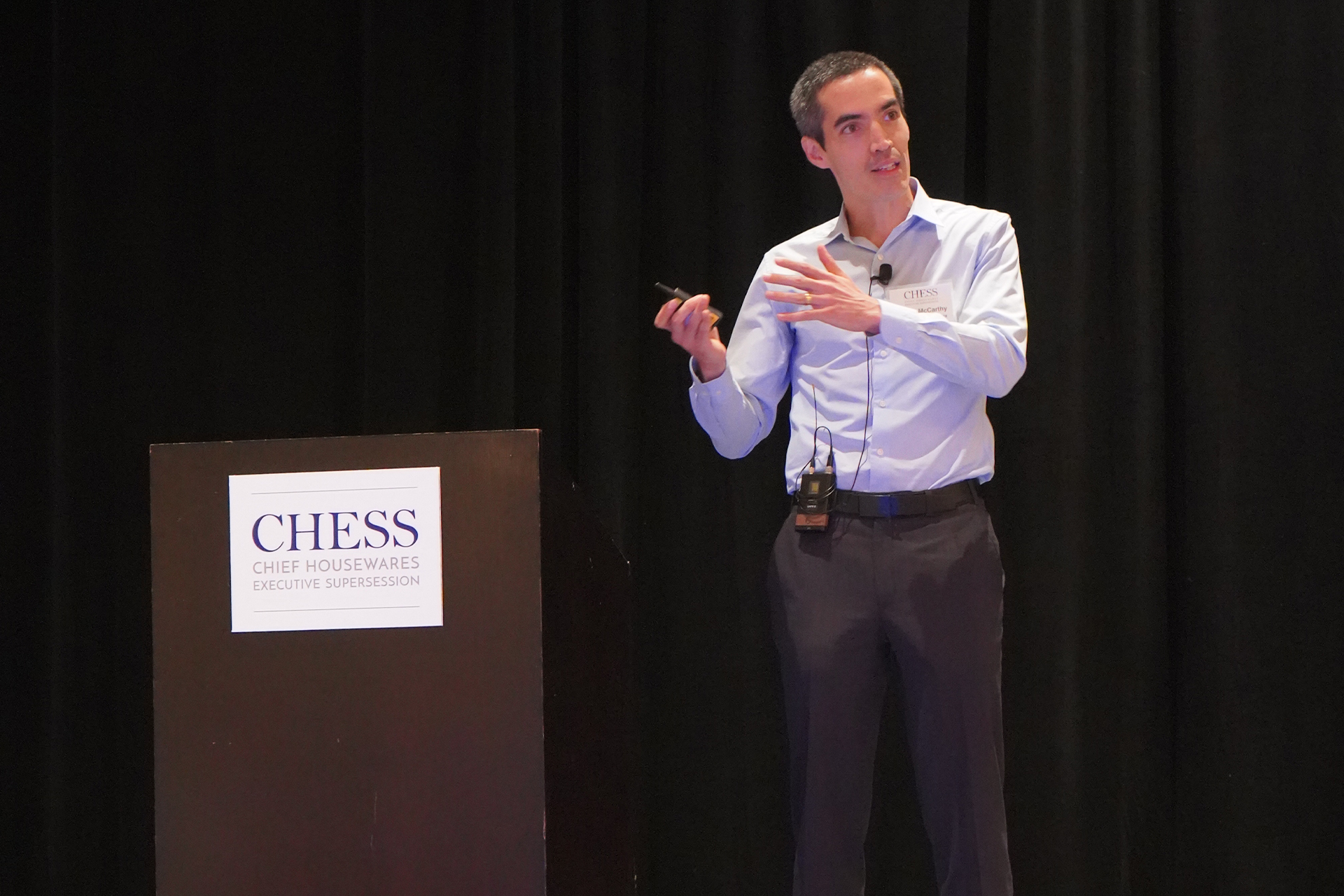
Consumer valuation has migrated out of the marketing department and now is of interest all the way up to the CEO or investors, says Daniel McCarthy, co-founder of Theta Equity Partners and an assistant professor of marketing at Emory University. McCarthy explained how a customer value-driven framework could help suppliers more accurately assess the underlying, forward-looking profitability of their businesses.
McCarthy said the basic problem with valuation is “Do you really know if you are creating value? Are you making investments in the right things?” Optimizing value is the traditional balance of whether the return on capital is higher than the cost of the capital versus growth. Venture capitalists view value as simply growing, but McCarthy warned that while growth is good, is it really creating value and cited Blue Apron and MoviePass as two companies that grew but didn’t create value.
One way to determine valuation is McCarthy’s Customer-Based Corporate Valuation (CBCV) which explicitly links financial valuation to drivers of unit economics: customer acquisition, churn, order rate, basket size, contribution margin and fixed costs, balance sheet effects and cost of capital. Explaining the framework of CBCV, McCarthy said it moves financial markets and played a CNBC Mad Money segment on how CBCV affected Wayfair’s stock. CBCV also has received broad-based acceptance inside and outside of marketing, McCarthy said, citing prominent financial publication articles on stock and IPO results from companies that have used CBCV, including Wayfair, Lyft, Blue Apron and Slack.
McCarthy offered several tactics for companies to ensure correct valuation including: get your house in order to capture the right data; cultivate sound customer measurement practices; pull together your customer-based report card; invest in experimentation; and instrument yourself for action.
Economies, Markets and Elections: Status, Outlook and Perspective
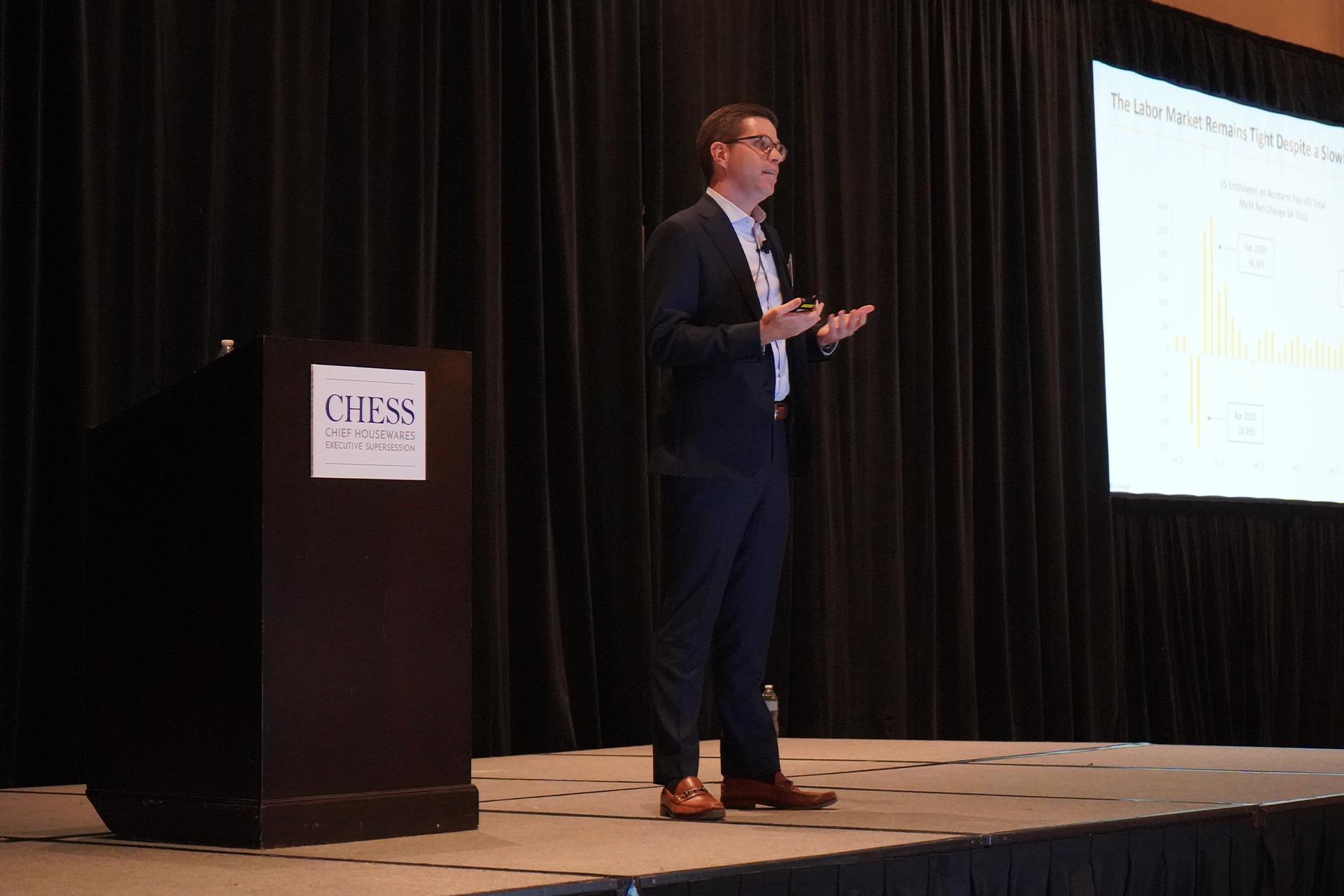
Phillip Neuhart, senior vice president, director of market and economic research for First Citizens Bank Wealth Management discussed driving topics that include Fed policy, inflation, the labor market, consumer spending, economic growth and the mid-term election.
The labor market remains tight despite a slowing economy. We’ve seen wages growing year-over-year, remaining materially above the long-term average despite high inflation, said Neuhart, but consumers are stretched and there’s been a material increase in credit card spending and outstanding credit card debt. However, the US consumer is worried about inflation, with consumer confidence remaining near the lowest level since the 1970s. While spending on both goods and services remains above the 20-year averages, there has been a significant shift away from goods to services.
The bottom line, asserted Neuhart, is that the US economy is slowing and inflationary pressures remain high with inflation at the highest level since the early 1980s at 8.3%. The risk of recession has risen and it is now a coinflip of whether we enter a recession in the next 12 months.
Where do the markets go from here? Neuhart described a volatile 2022 with the next 12 months’ price-to-earnings ratio still above levels seen during recent sell-offs. He said despite inflation and geopolitical concerns, S&P 500 earnings will grow but with downward revisions. The consensus expects full-year 2022 earnings to grow by 8.6% with a 2023 estimated growth of 6.8%.
Neuhart gave five reasons to remain invested:
- Post-mid-term elections & governmental disposition lead to positive returns.
- Sentiment lows have historically seen higher forward returns.
- Forward returns follow the end of the Fed-rate hiking cycle.
- Recovery time post-drawdown.
- Returns during and after a recession.
Ending his session, Neuhart concluded that the 2022 S&P 500 Target equated to around a -8.5% growth, 8-10% earnings growth and 15-20% multiple contraction.

